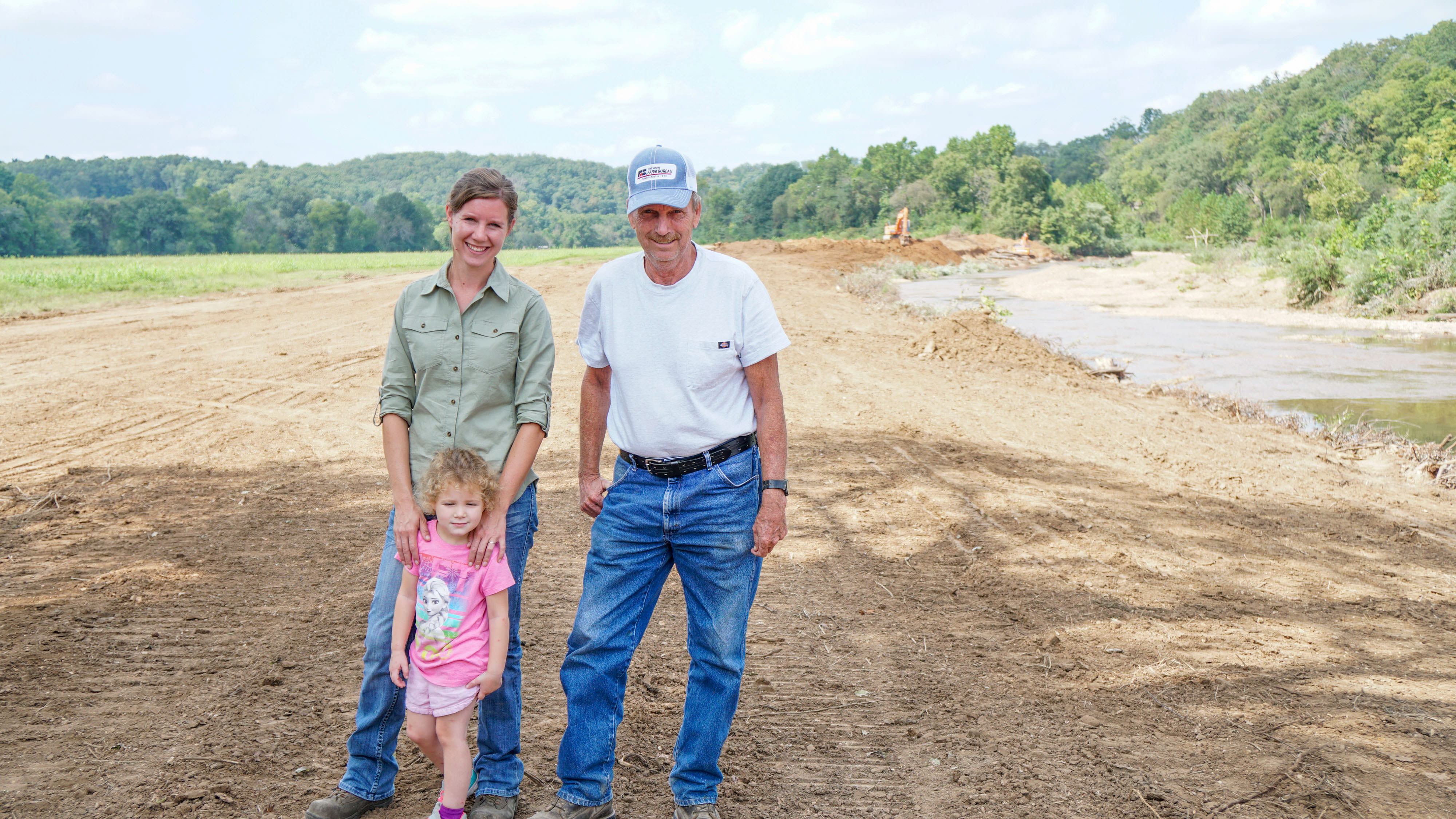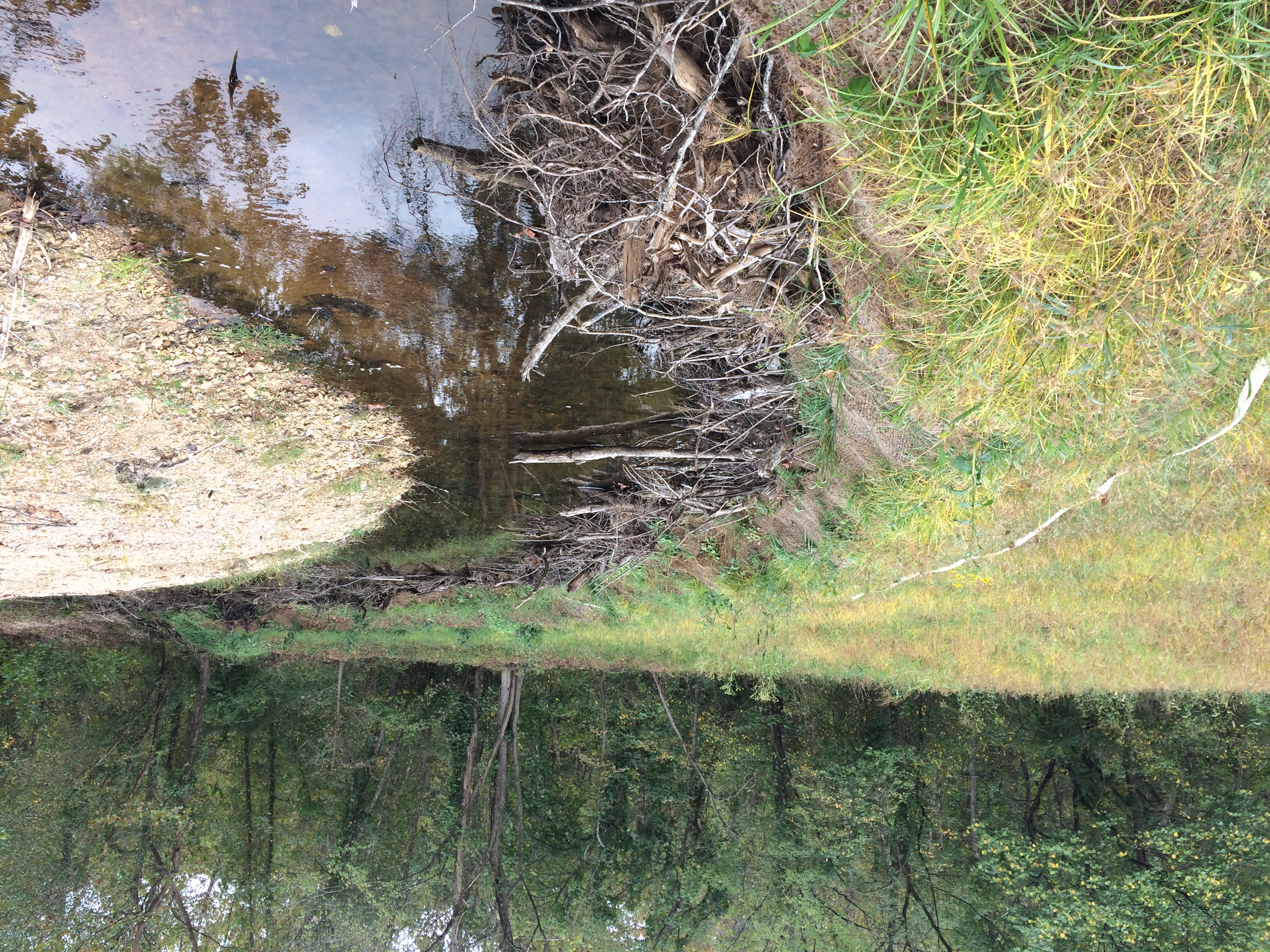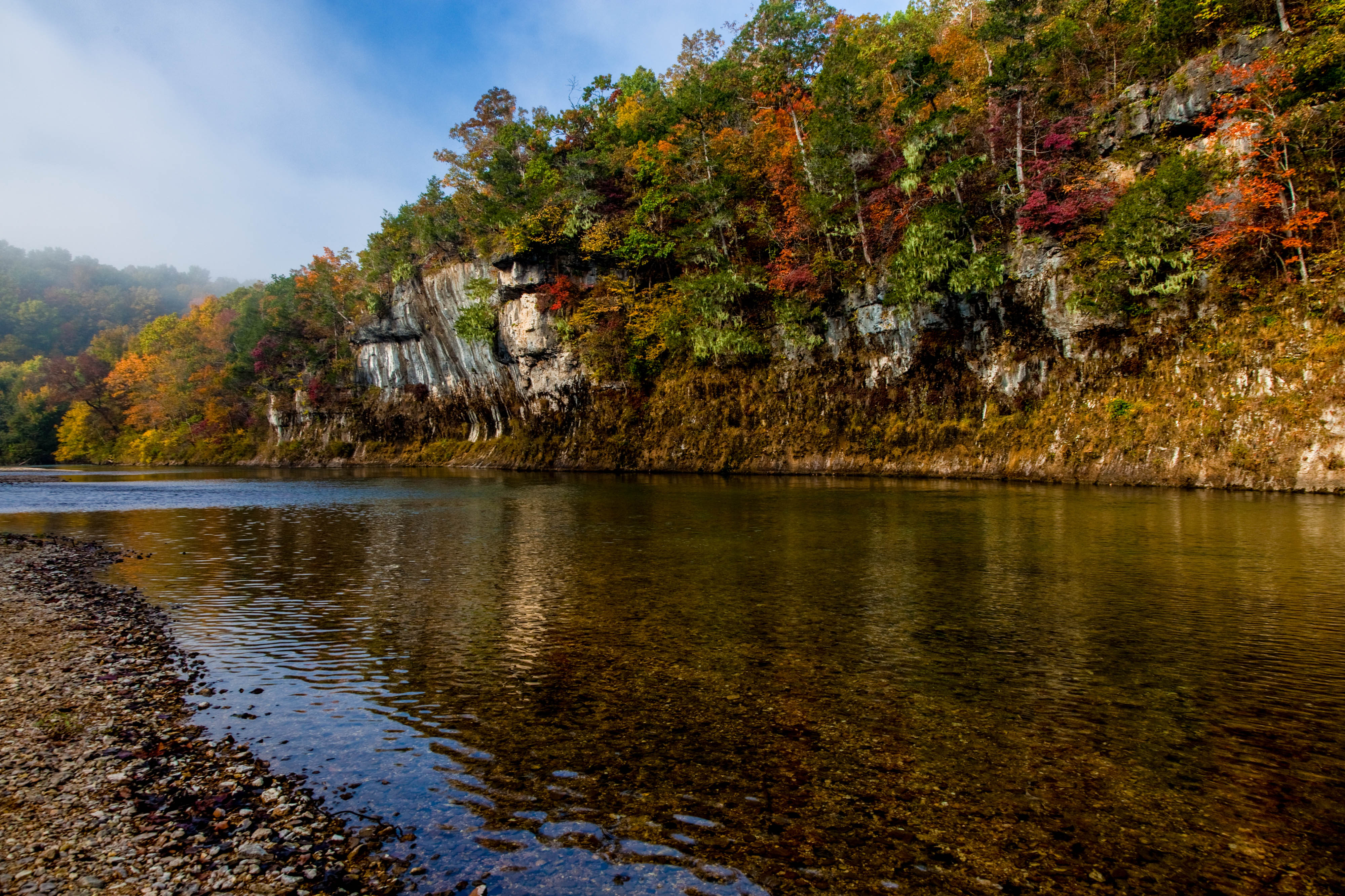About the Project
Huzzah Creek is an ecologically and economically significant drainage in the Meramec River Basin in the eastern Ozarks in Missouri. Its excellent waters are home to a vibrant kayaking and floating industry, providing among best-in-the-state fishing for smallmouth bass and other sunfishes. The Huzzah Creek watershed also supports numerous farmers that rely on its hills and floodplains for agricultural purposes, such as livestock grazing and feed crops.
Unfortunately, like other river basins in the state, streambank erosion impacts its waters, resulting in sedimentation and nutrient pollution, loss of in-stream habitat, degradation of water quality and recreation opportunities for local communities, and loss of land critical to farmers.
At these sites on Huzzah Creek near Davisville, The Nature Conservancy is teaming with the Missouri Department of Conservation, Ozark Regional Land Trust, and the Yocom family, who own the property to stabilize nearly 2,000 feet of eroding streambank by implementing sophisticated engineering and nature-based approaches to stop the erosion, enhance habitat for fish and wildlife, and keep private land from washing away.
This project is part of a larger initiative to collaborate with local landowners and farmers for alternative livestock watering systems, stable stream crossings, fencing, and protected and restored riparian buffers that support sustainable agricultural practices that benefit nature and producers alike.
TNC’s Huzzah Creek project is similar to other stream restoration projects that have been successfully completed around that state, including the Elk River in Southwest Missouri and LaBarque Creek, outside of St. Louis.
Design and Technique
The Nature Conservancy worked with a professional stream restoration and engineering firm to design and construct the project to maximize long-term stabilization and ecological benefits at the sites. State-of-the-science function-based design principles were used to engineer the physical reshaping of the reaches, including building out the streambank to reduce near-bank stress and gentle grading of the streambank to relieve stress during flooding.
Structural-based bioengineering was used to stabilize the streambank base using trees with root wads harvested on-site, which provided material “match” from the farmer that significantly reduced project costs.
Plant-based bioengineering was used to ensure long-term stability and ecological function, including live transplants on top of structures and live stakes for ensuring deep-rooted vegetation in the streambank itself, hundreds of pounds of native seed for rapid- and long-term herbaceous plant growth, over 1,000 potted native trees planted in the newly graded streambank, and heavy fiber-based erosion control blankets for stopping erosion, resisting shear stress, and facilitating seed growth.

Just Moments in Time
Steve Yocom has been a farmer his whole life.
“My grandmother and grandfather bought this property in the 1930s, and it’s been in the family ever since,” he said. “I never left.”
The family farm, located in the small town of Davisville in Crawford County, Mo., has grown to encompass over 1,100 acres with well over 2 miles of frontage along the Huzzah Creek—a tributary of the Meramec River. It was historically a grass-based dairy and beef farm and remains a cattle farm today.
Since 2009, Steve and his daughter, Rachel Hopkins, his partner in the cattle operation, have fought severe erosion along their streambanks. “We’ve tried a lot of options, including planting willows and laying down erosion control mat, but none of them held,” said Steve. “We were losing our land with every flood,” said Rachel.
When Rob Pulliam, a biologist with the Missouri Department of Conservation (MDC), connected Steve and Rachel with Dr. Steve Herrington, TNC’s director of science & impact measures, they learned there was another solution.
“Nature-based solutions or bioengineering isn’t a new concept, but it’s rarely used in Missouri,” said Herrington. “It’s using the fundamentals of engineering but utilizing nature for the materials, which not only increases the stability of the structure, but also provides critical habitat for fish and wildlife.”
Steve and Rachel were in. “We knew we had to try this and hope it works, or don’t and know what that outcome will be,” said Rachel.
Quote: Rachel Yocom
We are just trying to continue what is not just ours, but our future generations’. We are just moments in time.
Working with The Nature Conservancy, MDC, and the Ozark Land Trust, nearly 2,000 feet of streambank has been stabilized using bioengineering.
Trees from the Yocoms’ property were selectively harvested and used on the project to cut costs and utilize homegrown resources. They were then able to take advantage of an MDC cost-share program to revegetate the area and add diversity to their grazing mix.
Throughout the process, Steve made sure Rachel was a part of all conversations and decisions. “This land will be hers someday and I want her to be involved in the day-to-day operations and long-term decisions,” said Steve.
The Yocoms’ goal was to stop losing their land to the creek now and into the future. “We are just trying to continue what is not just ours, but our future generations’," said Rachel. “We are just moments in time.”



